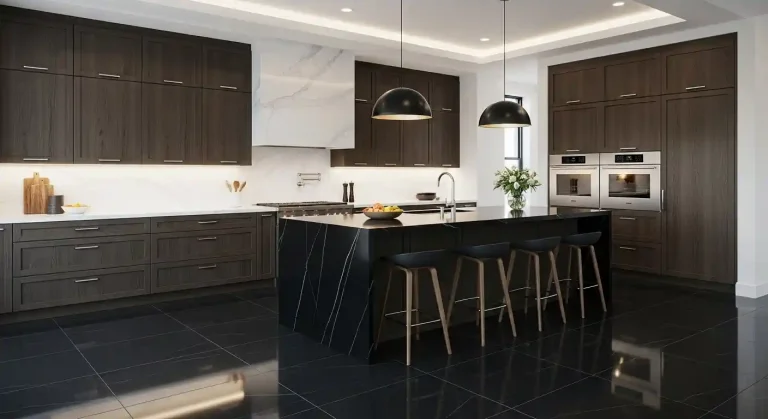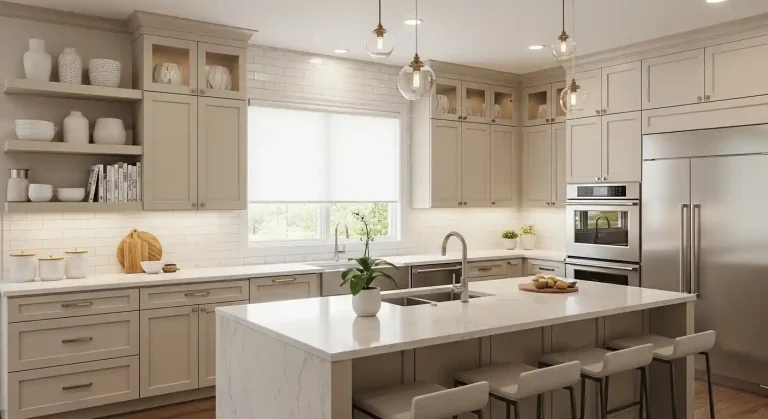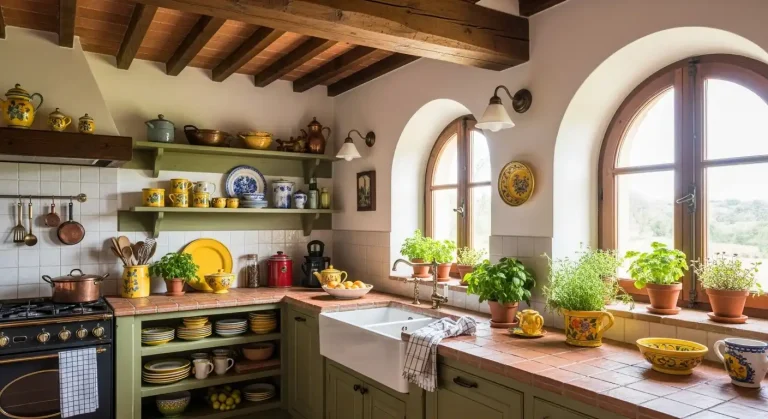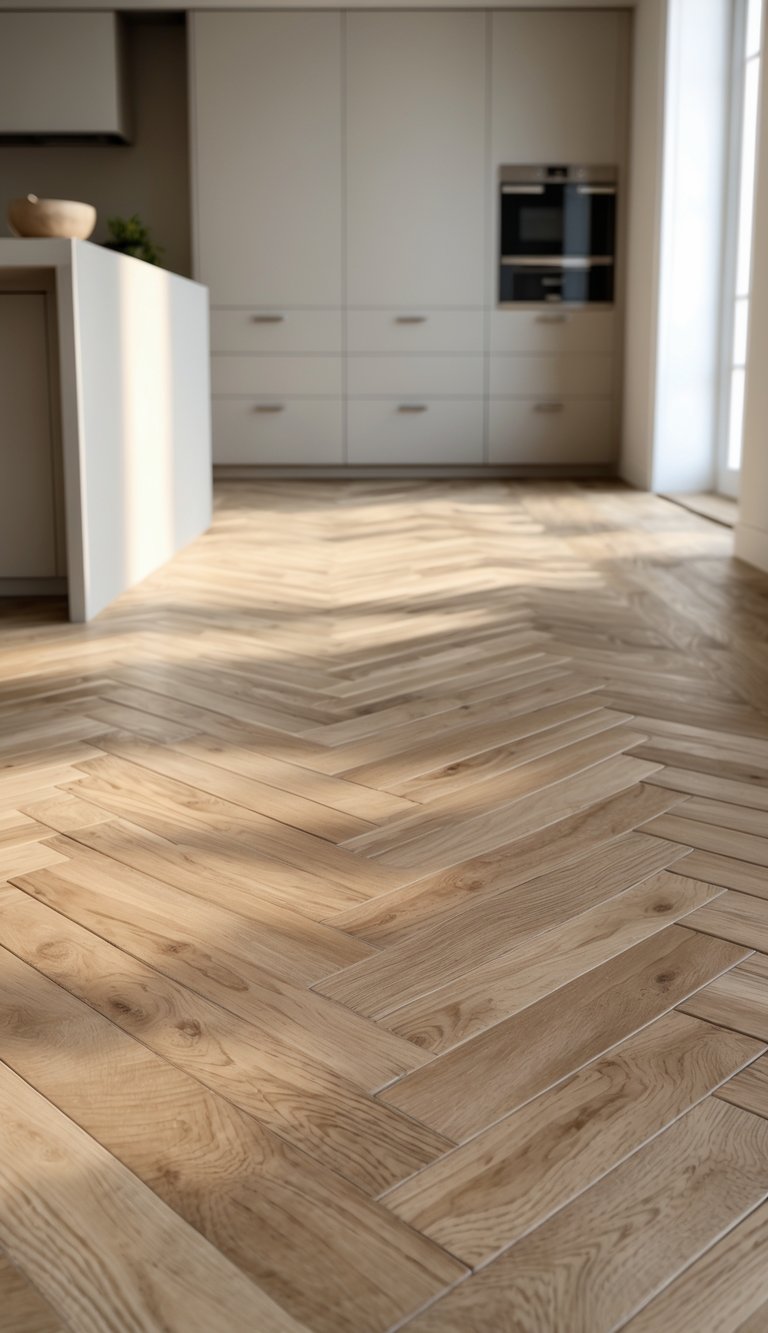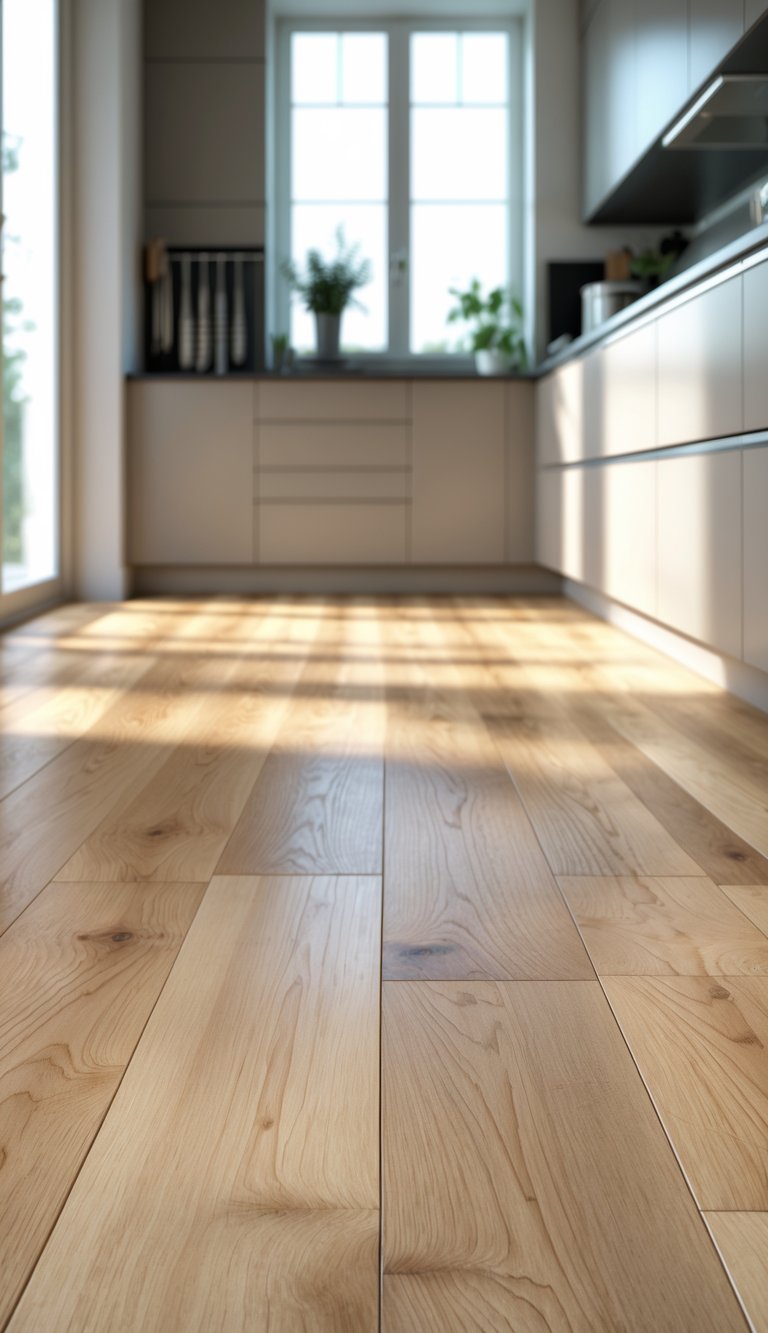How to Pick the Perfect Kitchen Color Scheme for Your Style
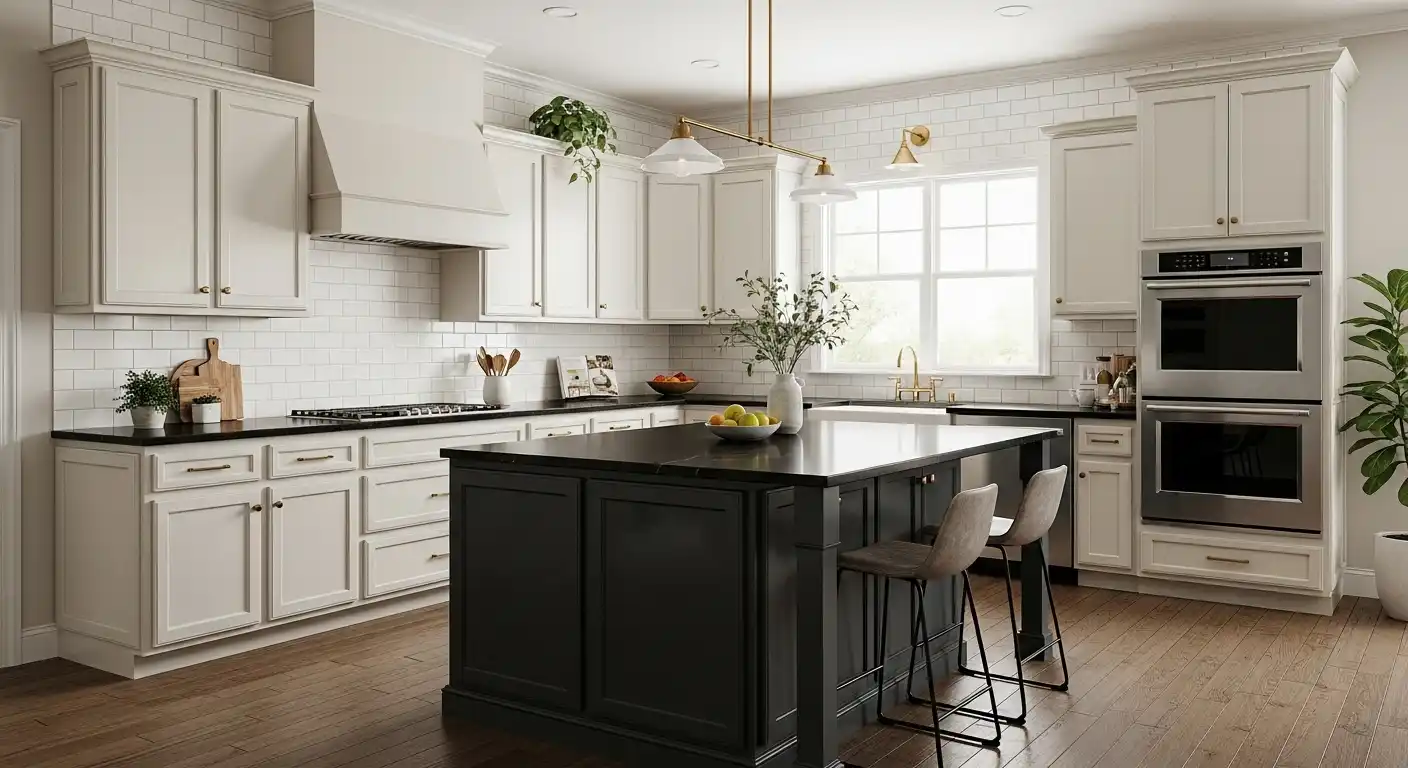
Choosing the right colors for your kitchen can be one of the most exciting and transformative parts of designing or renovating this vital space.
The kitchen is often referred to as the heart of the home, where family gathers, meals are prepared, and memories are made.
The color scheme you select sets the tone, influences mood, and can even affect the perceived size and lighting of the room.
But with countless shades, combinations, and design trends, the question remains: how to pick the perfect kitchen color scheme for your style?
🍁🎃 Fall Finds & Seasonal Savings on Amazon !
Don’t miss out on the best discounts and top-rated products available right now!
*As an Amazon Associate, I earn from qualifying purchases.
In this comprehensive guide, we’ll walk you through everything you need to know to confidently select a color palette that reflects your personality, complements your kitchen’s architecture, and creates a welcoming atmosphere.
Why the Kitchen Color Scheme Matters
Before diving into the practical steps of choosing colors, it’s essential to understand why your kitchen color scheme is so crucial.
Colors have psychological effects — they can energize, calm, or inspire creativity.
For example, warm tones like reds and oranges can stimulate appetite and conversation, while cool tones like blues and greens evoke calmness and cleanliness.
Moreover, your chosen colors impact how light interacts with the space. Lighter colors can make a small kitchen feel open and airy, while darker hues add drama and coziness.
The kitchen color scheme also ties together cabinetry, countertops, backsplashes, and even flooring, creating a cohesive and harmonious look.
Step 1: Assess Your Kitchen’s Features and Lighting
Before choosing any paint or finish, take a good look at your kitchen’s existing features:
- Natural light: How much sunlight does your kitchen receive? North-facing kitchens tend to have cooler, dimmer light, while south-facing kitchens are bright and warm.
- Artificial lighting: Consider the types of light fixtures and bulbs you use. Warm bulbs enhance warm colors, while cool bulbs highlight cooler tones.
- Size and layout: Small kitchens benefit from lighter colors to feel spacious, while large kitchens can handle bolder, darker schemes.
- Cabinetry and countertops: Are you starting fresh, or do you need to coordinate with existing elements?
Understanding your kitchen’s lighting and physical characteristics will help you choose colors that complement rather than clash.
Step 2: Identify Your Personal Style
Your kitchen should be a reflection of your taste and lifestyle. Are you drawn to modern minimalism, classic farmhouse charm, or vibrant eclectic vibes?
Identifying your style narrows down your color options and ensures your kitchen feels authentic.
- Modern and Minimalist: Think monochromatic palettes, cool neutrals, and sleek finishes. Shades of white, gray, black, or navy work well.
- Traditional and Classic: Warm neutrals, soft pastels, and rich wood tones create a timeless look.
- Farmhouse and Rustic: Earthy colors like sage green, creamy whites, and warm browns evoke a cozy, welcoming feel.
- Bold and Eclectic: Bright colors, contrasting hues, and unexpected combinations make a lively statement.
Once you have a style in mind, explore color palettes that align with it.
Step 3: Use the Color Wheel to Create Harmonious Combinations
A helpful tool in deciding your kitchen color scheme is the color wheel, which shows relationships between colors and helps create pleasing combinations.
Here are some common schemes:
- Monochromatic: Different shades and tints of the same color. This creates a cohesive, subtle look.
- Analogous: Colors that sit next to each other on the wheel, such as blue, blue-green, and green. These combinations are harmonious and soothing.
- Complementary: Colors opposite each other, like blue and orange or red and green. These create vibrant contrast and energy.
- Triadic: Three colors evenly spaced on the wheel, such as red, yellow, and blue. This offers a balanced yet colorful palette.
Using these principles, you can mix and match colors for walls, cabinets, backsplashes, and accents.
🍁🎃 Fall Finds & Seasonal Savings on Amazon !
Don’t miss out on the best discounts and top-rated products available right now!
*As an Amazon Associate, I earn from qualifying purchases.
Step 4: Choose a Base Color and Accent Colors
When learning how to pick the perfect kitchen color scheme, it’s useful to think in terms of a base color and accent colors.
- Base color: This is the dominant color, often used on walls or cabinetry. It sets the overall mood.
- Accent colors: These add interest and dimension, used in smaller doses on backsplashes, kitchen islands, hardware, or décor.
For example, if you choose a soft gray as your base, you might use navy blue and brass accents for a sophisticated look.
Or a warm cream base with sage green and terracotta accents can create a rustic vibe.
Step 5: Test Samples in Your Kitchen
Colors can look very different depending on lighting and surrounding materials.
Always test paint swatches or sample boards in your kitchen before committing. Paint large enough patches on your walls and observe them at different times of day.
Consider how the colors interact with your countertops, flooring, and appliances.
This step is crucial to avoid costly mistakes and ensure your color scheme feels right in the actual space.
Step 6: Consider Trends vs. Timelessness
While it’s tempting to pick trendy colors, remember that kitchen renovations are long-term investments.
Trends like bold jewel tones or pastel hues come and go, but classic neutrals tend to age well.
If you want to incorporate trendy colors, consider using them as accents or in easily changeable elements like kitchen accessories, backsplashes, or bar stools.
This way, you can update your kitchen’s look without a full repaint.
Popular Kitchen Color Schemes to Inspire You
Here are some tried-and-true kitchen color schemes that work well across various styles:
🍁🎃 Fall Finds & Seasonal Savings on Amazon !
Don’t miss out on the best discounts and top-rated products available right now!
*As an Amazon Associate, I earn from qualifying purchases.
- White and Gray: A timeless combination that brightens the space and feels clean and modern.
- Navy and White: Navy cabinets paired with white walls and countertops create a sophisticated and nautical vibe.
- Sage Green and Cream: Earthy and soothing, perfect for farmhouse or rustic kitchens.
- Black and Wood Tones: Black cabinets or accents combined with warm wood add drama and warmth.
- Soft Blue and White: Light blue walls with white cabinetry evoke a fresh, coastal feel.
- Bold Red and Neutrals: Red as an accent color energizes the kitchen while neutrals balance the intensity.
How to Incorporate Color Beyond Paint
Your kitchen color scheme isn’t limited to just paint on the walls. Here are ways to bring color into your kitchen design:
- Cabinetry: Painted cabinets are a great way to introduce color, whether you choose a bold hue or a subtle shade.
- Backsplashes: Tiles come in endless colors and patterns, allowing you to add personality.
- Countertops: Materials like quartz or granite can feature colorful veining or flecks.
- Appliances: Some brands offer colorful refrigerators, mixers, or toasters that can serve as playful accents.
- Accessories and textiles: Rugs, curtains, dishware, and lighting fixtures provide flexible color options.
Final Tips on How to Pick the Perfect Kitchen Color Scheme
- Balance warm and cool tones: Mixing both creates depth and interest.
- Think about flow: Consider how your kitchen colors will transition into adjoining rooms.
- Don’t forget ceiling and trim: These can be painted in complementary colors to frame the space.
- Use neutrals as a safe base: They allow you to change accent colors easily over time.
- Trust your instincts: Choose colors that make you happy and comfortable.
Conclusion
Learning how to pick the perfect kitchen color scheme is about blending your personal style with practical considerations like lighting, size, and existing features.
By assessing your space, identifying your style, using color theory, testing samples, and balancing trends with timelessness, you can create a kitchen that is not only beautiful but also a joy to spend time in.
Remember, the kitchen is a place of creativity and connection. The colors you choose should inspire and uplift you every time you walk in.
So take your time, explore options, and design a kitchen color scheme that truly feels like home.

